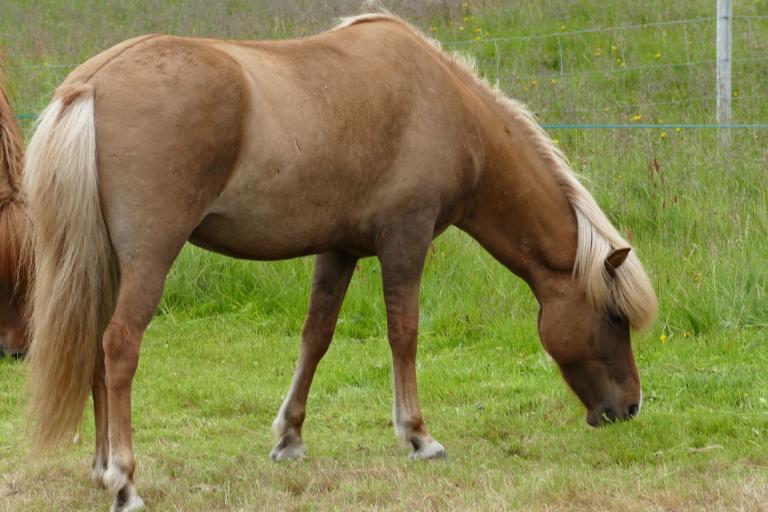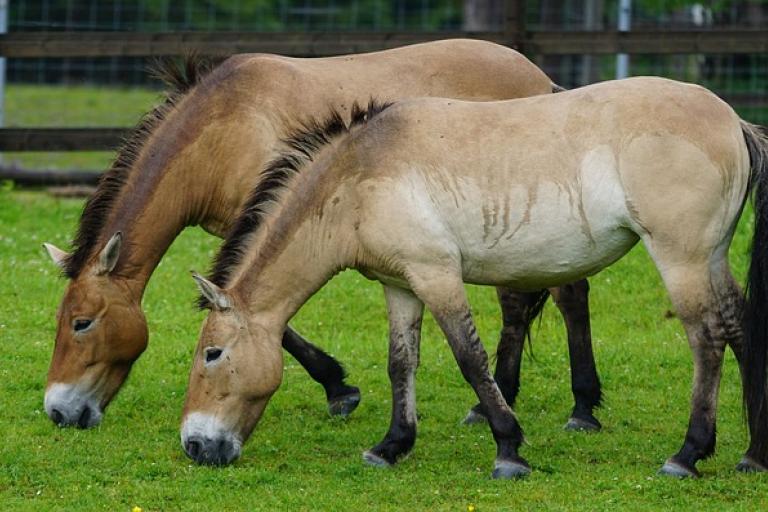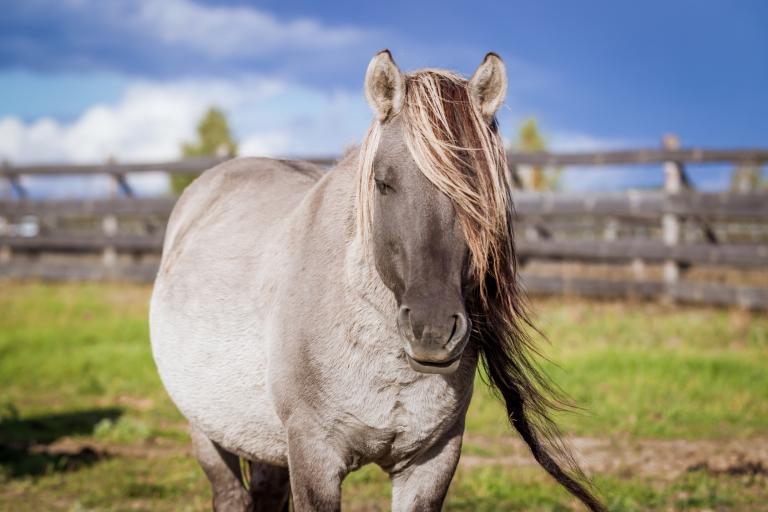Dun (Dilution factor Horse)
Dun is a dilution of the base colour in combination with primitive markings (stripes on legs and one along the back). Dun is the original coat colour of all horses ("wild type"). Depending on the base colour of the horse, different colourings occur: Red Dun (chestnut), Yellow Dun (bay), Blue Dun (black).
General Information
- Duns show a diluted coat colour depending on their base color, and primitive markings (stripes on legs and one along the back).
- Dun is the original coat colour of all horses. Over time, two mutations (nd1 and nd2) caused the now wide-spread undiluted phenotypes most modern horses display.
- nd1 (non-dun1) leaves the gene partially functional and allows a non-diluted coat colour but may keep the primitive markings (“pseudo-duns“).
- nd2 (non-dun2) switches the gene off completely and the horse displays a non-diluted coat colour without primitive markings → most common phenotype in modern breeds.
- A horse may be D/D, D/nd1, D/nd2, nd1/nd1, nd1/nd2, or nd2/nd2.
- Dun is dominant, so a dun horse must have at least one dun parent.
- A horse with a copy of cream and primitive markings from nd1 (“pseudo-dun) may be difficult to distinguish from a “true” dun.
- Buckskin (bay+cream) horses are often called “dun”, but a “true dun” has both a diluted coat colour and primitive markings.
Test Information
Locus Informationen: D-Locus
This test detects three different variants:
1. The Wildtype (Dun).
2. The non-dun1 (nd1) mutation, which is caused by the change of a single basepair in the TBX3 gene.
3. The non-dun2 (nd2) mutation, which is caused by a deletion in the TBX3 gene.
Genotype and Lab Report
Inheritance: autosomal dominant
→ Horses with one or two copies of this variant (D/nd or D/D) are duns and show the diluted coat colour and the primitive markings (zebra stripes, dorsal stripe) on their legs and back.
Genotypes
Duns:
D/D → Dun (homozygous, diluted coat colour with primitive markings)
D/nd1 → Dun (diluted coat colour with primitive markings)
D/nd2 → Dun (diluted coat colour with primitive markings)
Pseudo-duns:
nd1/nd1 → undiluted coat colour with primitive markings (dorsal stripe and leg bars)
nd1/nd2 → undiluted coat colour that may have primitive markings (dorsal stripe and leg bars):
Non-duns:
nd2/nd2 → undiluted coat colour without primitive markings
Appearance
Literature
Imsland, F., McGowan, K., Rubin, C.J., Henegar, C., Sundström, E., Berglund, J., Schwochow, D., Gustafson, U., Imsland, P., Lindblad-Toh, K., Lindgren, G., Mikko, S., Millon, L., Wade, C., Schubert, M., Orlando, L., Penedo, M.C., Barsh, G.S., Andersson, L.: Regulatory mutations in TBX3 disrupt asymmetric hair pigmentation that underlies Dun camouflage color in horses. Nat Genet :, 2015. Pubmed reference: 26691985. DOI: 10.1038/ng.3475.
Further information is available at Online Mendelian Inheritance in Animals.



